The Enchantment of Magical Plants: A Guide to Mystical Flora
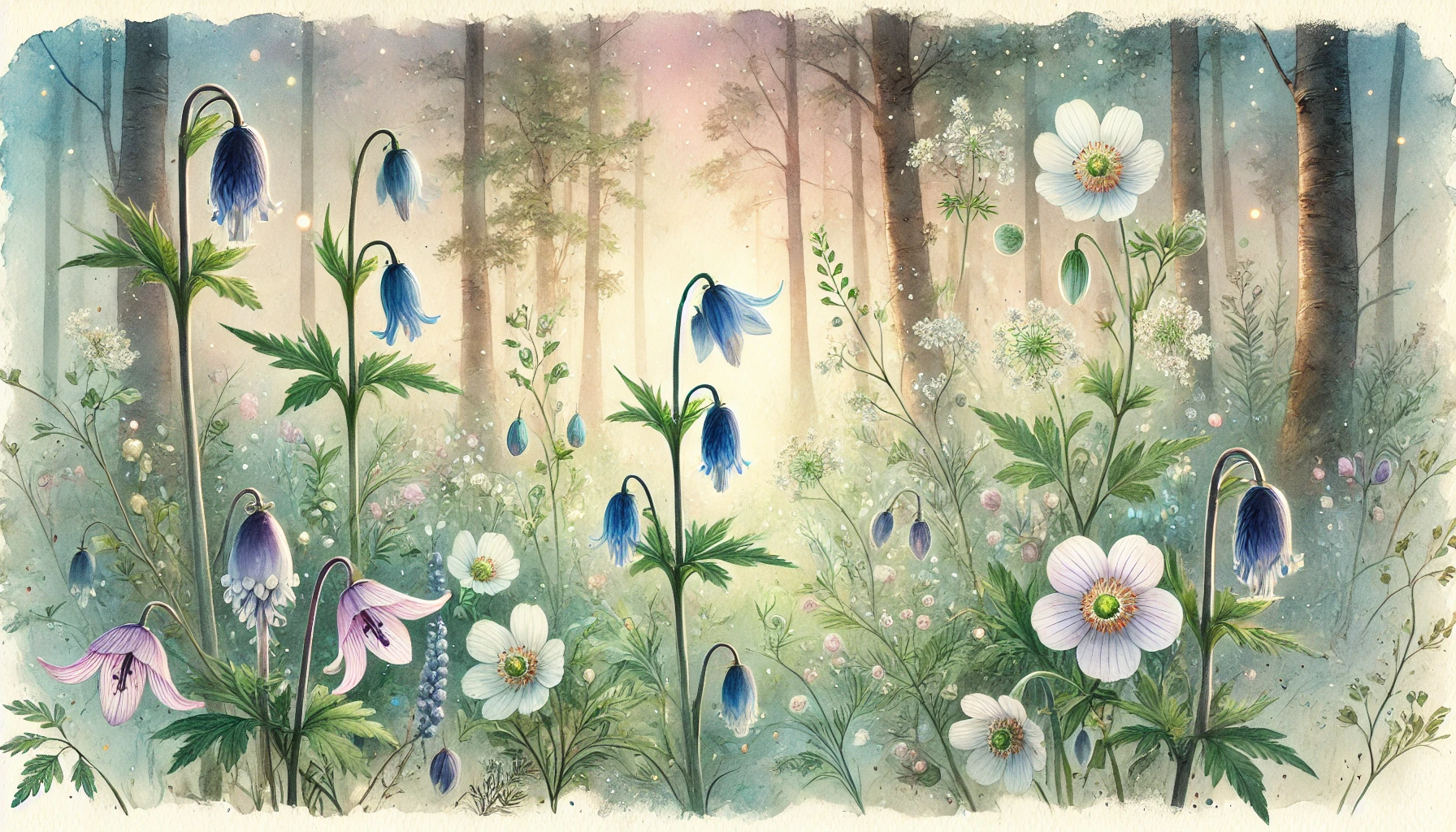
Since ancient times, people have turned to magical plants for their healing powers, protective qualities, and mystical connections. Many of these plants hold a special place in rituals, spells, and folklore. Each plant has unique properties that have been passed down through generations, offering insight into the deep relationship between humans and the natural world. Let’s explore some of the most famous magical plants and their fascinating roles in magic, folklore, and healing.
10 Most Magical Plants on Earth (Used for Magic)
Here are the most famous magical plants and their fascinating roles in magic, folklore, and healing:
- Aconite (Monkshood/Wolfsbane)
- Amaranth
- Artemisia (Mugwort/Wormwood)
- Blackthorn
- Chamomile
- Datura (Devil’s Trumpet)
- Deadly Nightshade (Atropa belladonna)
- Garlic
- Mandrake
- Vervain
10 Most Magical Plants on Earth: Detailed Look
1. Aconite (Monkshood/Wolfsbane)
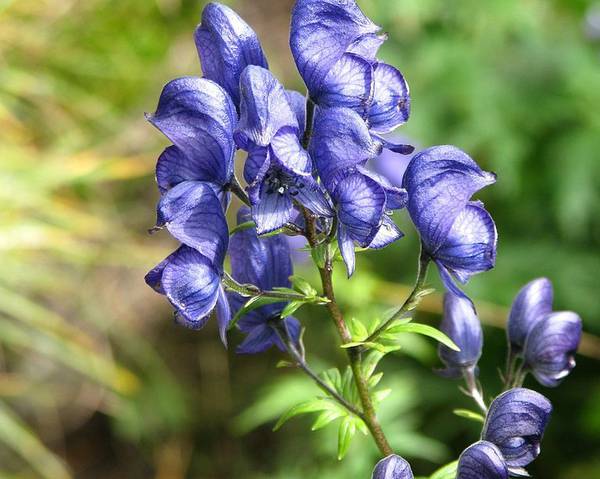
Scientific Name: Aconitum napellus
Aconite, also known as Monkshood or Wolfsbane, is a striking yet dangerous plant known for its lethal toxicity. Its deep blue or purple flowers make it stand out, but beneath its beauty lies a deadly secret. Historically, it was used to poison wolves (hence the name Wolfsbane) and even human enemies during battles. In ancient magic, witches and sorcerers were believed to use Aconite in their potions, particularly in witches’ flying ointments, which were said to help them travel through the air.
This plant is also connected to Hekate, the Greek goddess of witchcraft and magic, enhancing its reputation as a powerful, dark plant. While beautiful, Aconite serves as a reminder of nature’s dangerous side—it’s both a magical tool and a poisonous plant to be handled with extreme care.
2. Amaranth
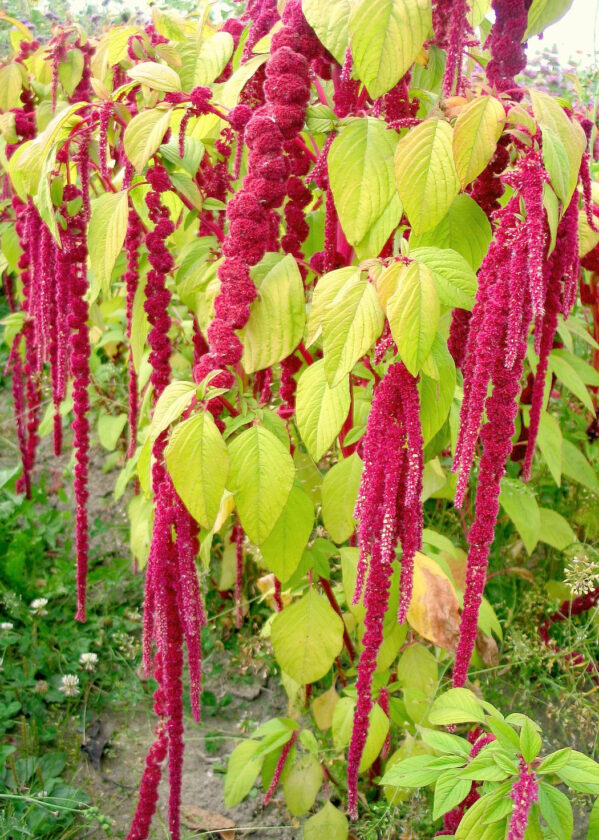
Scientific Name: Amaranthus
Amaranth is a plant that symbolizes immortality and resilience. Its scarlet petals and long-lasting nature have made it a popular choice in rituals focused on healing and vitality. Amaranth is often used in healing potions due to its association with wound healing and restoring life-giving potential.
In addition to its magical uses, Amaranth is known for its role as a protein-rich grain in ancient cultures, valued for its ability to thrive even in tough conditions. This plant not only provides physical nourishment but also spiritual strength, making it a symbol of renewal and longevity in magical practices.
3. Artemisia (Mugwort/Wormwood)
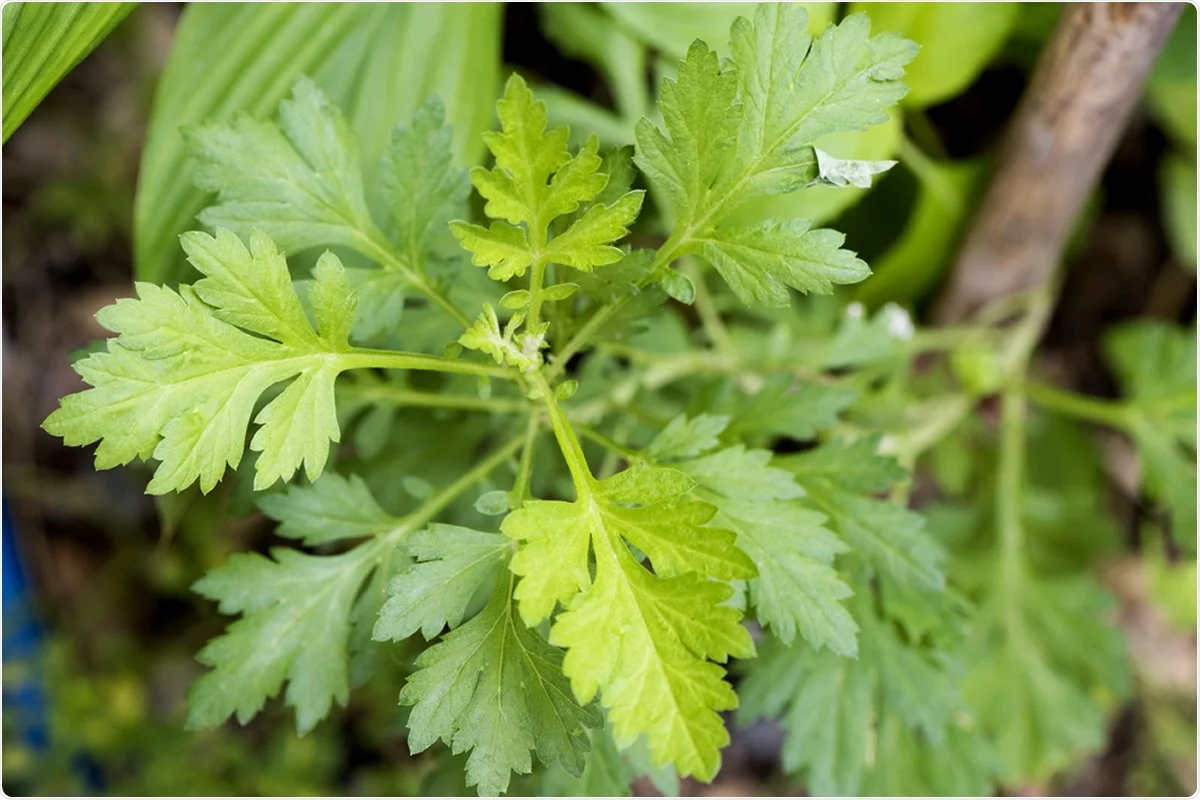
Scientific Name: Artemisia vulgaris
Named after the Greek goddess Artemis, Artemisia is a well-known plant in both traditional medicine and magic. Mugwort, a common variety, is used in rituals for cleansing and divination, believed to protect against evil spirits and negative energies. Mugwort is also famous for its ability to enhance dreams and visions, helping people connect with the spiritual world.
Another form of Artemisia, Wormwood, plays a significant role in the creation of absinthe, a potent drink associated with mystical experiences. The plant contains thujone, a compound that has hallucinogenic effects, often used by shamans and witches to aid in spiritual journeys. Artemisia, in its many forms, has long been regarded as a powerful plant for both protection and enhancing psychic abilities.
4. Blackthorn
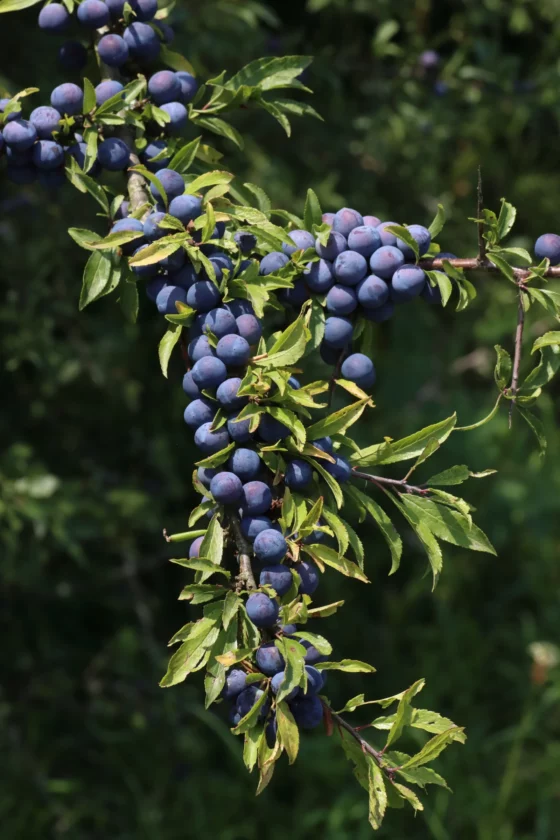
Scientific Name: Prunus spinosa
The Blackthorn tree, with its twisted spiky branches and sharp thorns, has long been associated with dark magic and curse-casting in Celtic folklore. Its sinister appearance, often seen in the depths of the forest, led people to believe it had the power to place curses on enemies. In magical traditions, Blackthorn wands were used to channel dark energies.
Despite its dark reputation, Blackthorn is also seen as a symbol of protection. It was used to craft sturdy walking sticks and protective wands, offering both physical and magical defense, particularly during the cold winter months when evil spirits were thought to roam. While its thorns may seem forbidding, Blackthorn has a dual role in magic—both as a tool for cursing and protection.
5. Chamomile
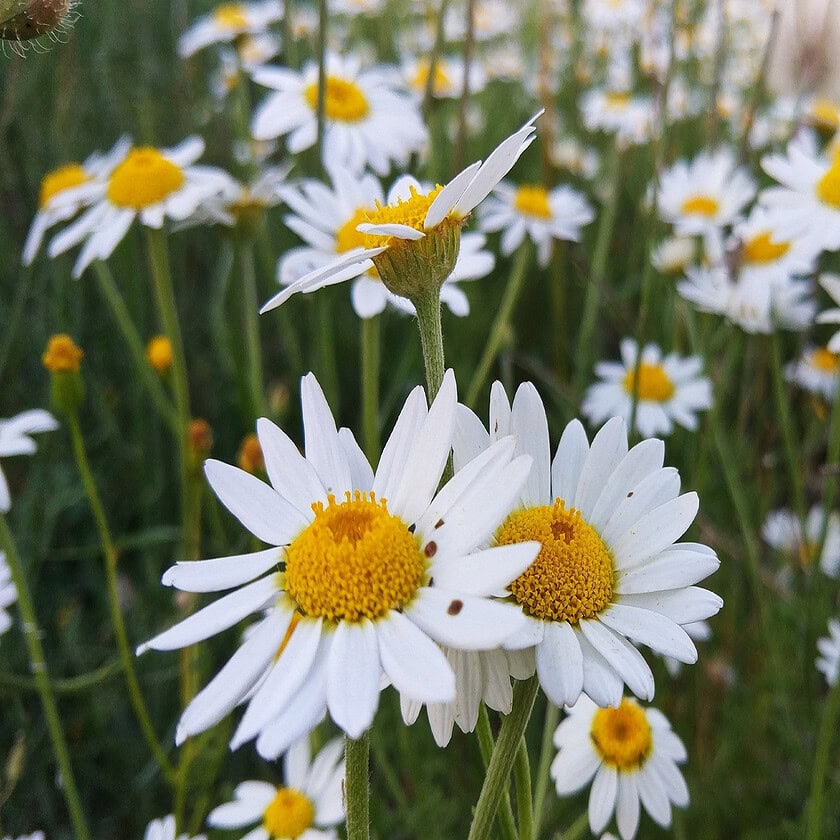
Scientific Name: Matricaria chamomilla
Chamomile is one of the most commonly known magical plants, celebrated for its calming and healing properties. Used in both magic and medicine, Chamomile is often brewed into tea to improve sleep quality and reduce anxiety. In magical practices, Chamomile is believed to bring luck and wealth, especially when used in rituals to remove curses and attract positive energy.
Its sunny flowers are associated with the element of fire and are believed to have the power to banish negativity and promote good fortune. Chamomile can also be applied to the skin to soothe sunburns and irritations, making it a versatile herb for both physical and magical healing.
6. Datura (Devil’s Trumpet)
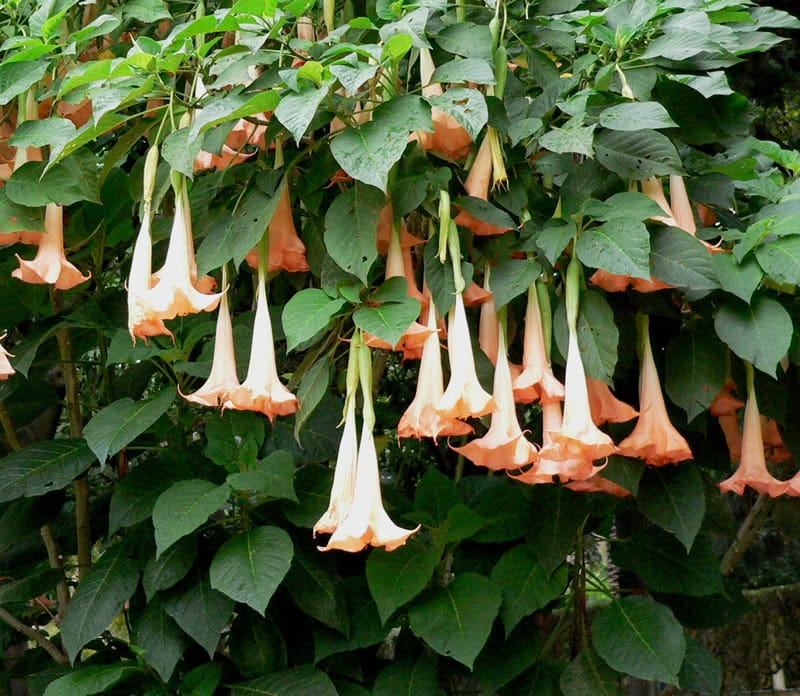
Scientific Name: Datura stramonium
Datura, also called Devil’s Trumpet or Devil’s Breath, is a plant known for its intense hallucinogenic effects and its role in spiritual journeys. Used by shamans and witches, Datura helps induce trance states that connect the practitioner to otherworldly realms. However, it is also highly toxic and has been linked to dangerous and even deadly outcomes if misused.
During the Spanish Inquisition, Datura was said to have been used in rituals to place people into a zombie-like state. Despite its dark and dangerous side, it holds a significant place in magical traditions, often used in controlled doses to explore spiritual and mystical experiences.
7. Deadly Nightshade (Atropa belladonna)
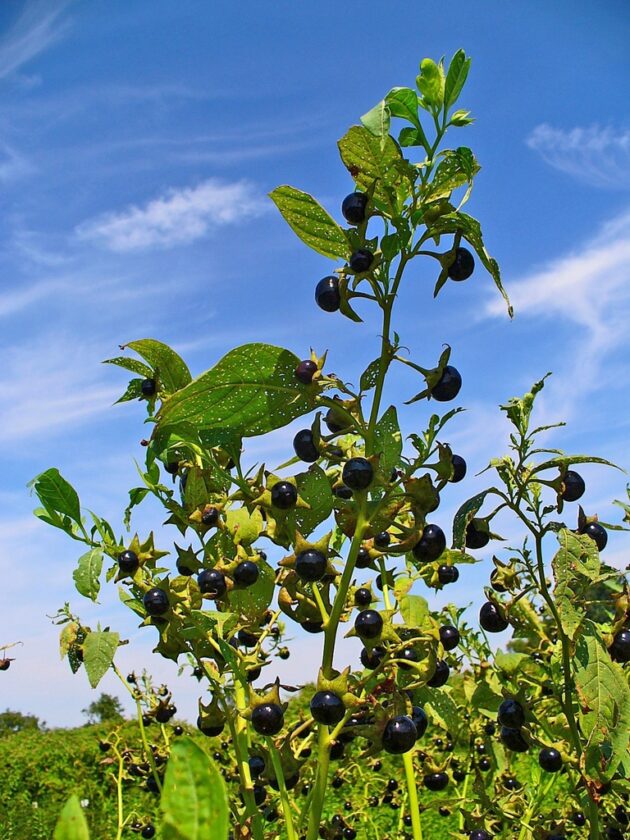
Scientific Name: Atropa belladonna
Deadly Nightshade, or Atropa belladonna, has a long history of being associated with both beauty and death. Its poisonous berries were famously used by women in Renaissance Venice to dilate their pupils, giving them a more alluring appearance. However, the plant’s potent alkaloids can cause hallucinations, paralysis, and even death.
In witchcraft, Deadly Nightshade was often used in flying ointments and magical potions meant to transport witches to other dimensions. Its connection to the Three Fates of Greek mythology adds to its mystical aura, representing the balance between life and death. Although dangerous, Deadly Nightshade continues to be a symbol of power and transformation in magic.
8. Garlic
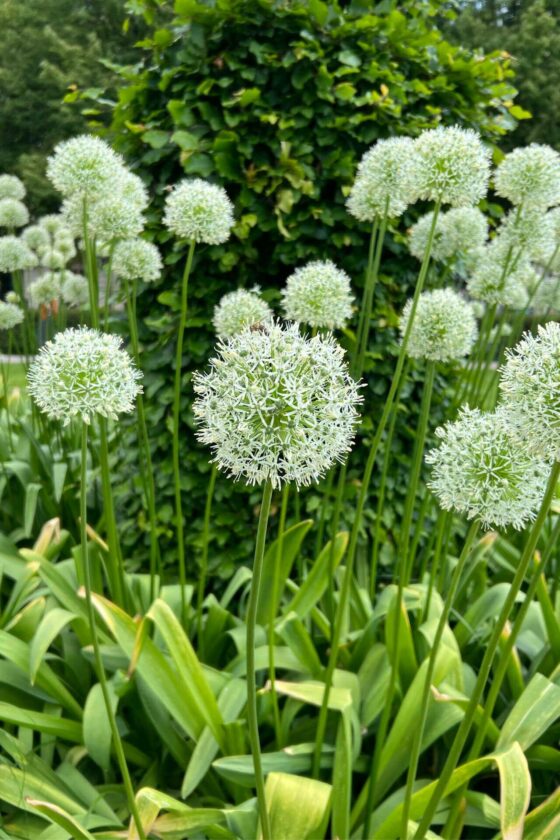
Scientific Name: Allium sativum
Garlic has long been used in folklore and magical practices as a powerful protective herb. Its strong scent is believed to repel evil spirits, vampires, and other supernatural threats. In many cultures, Garlic is hung in homes to provide protection and is often used in cleansing rituals to purify spaces of negative energy.
In addition to its protective qualities, Garlic is linked to courage and endurance, often used in rituals to strengthen one’s resolve and banish fear. It is also used in love spells to enhance passion and bring about attraction. With its role in both everyday life and magic, Garlic remains a staple of protective and purification magic.
9. Mandrake
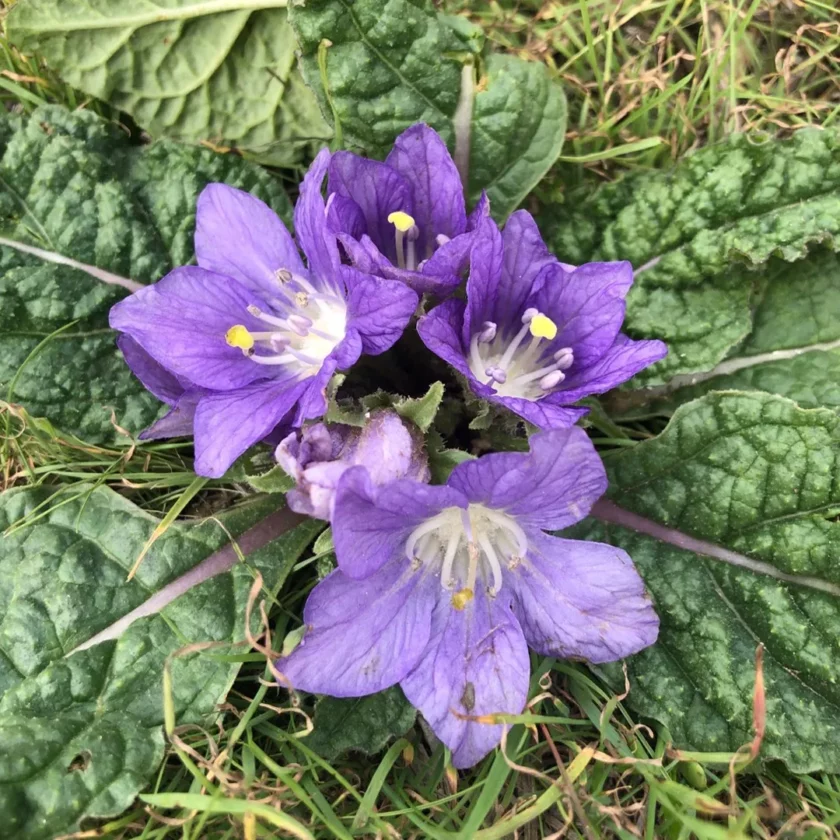
Scientific Name: Mandragora officinarum
Mandrake is one of the most famous magical plants due to its distinctive humanoid-shaped root. Legends tell of its terrifying scream when uprooted, which was believed to cause death to anyone who heard it. Despite this, Mandrake root was used in ancient rituals for clairvoyance, divination, and healing spells.
Mandrake’s association with the nightshade family gives it a reputation for both fertility and death. Its fleshy root was often used in sympathetic magic, where the shape of the root would influence the outcome of spells. For centuries, Mandrake has held a unique place in folklore as both a powerful magical tool and a symbol of transformation.
10. Vervain
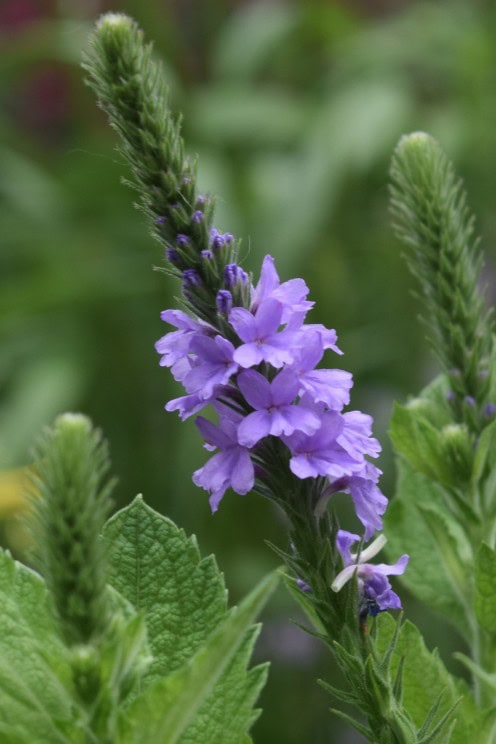
Scientific Name: Verbena officinalis
Known as the “Enchanter’s Herb,” Vervain has been used in magical rituals for centuries. It was highly regarded by Celtic druids for its ability to purify and protect against negative energy. In Christian lore, Vervain is said to have been used to heal Christ’s wounds, earning it the title of Holy Herb.
In modern magic, Vervain is used to enhance psychic abilities, attract love, and protect against harm. Its delicate serrated leaves and small flowers symbolize purification and healing, making it a popular choice for potions and rituals that cleanse both the body and sacred spaces.
Conclusion
These magical plants bridge the gap between the natural world and the supernatural, offering protection, healing, and transformation. From the deadly allure of Aconite to the protective power of Garlic, these plants hold ancient wisdom and magic, waiting to be unlocked. Their uses in spells, rituals, and healing practices remind us of the deep connection between humanity and the mysterious powers of nature.
No posts